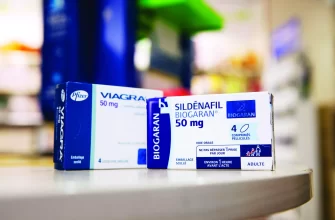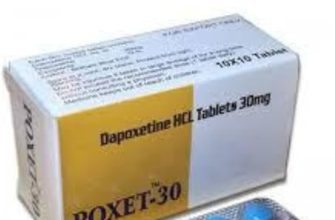Finding the right Prednisone dosage for Crohn’s disease is crucial for managing symptoms. Your doctor will personalize your treatment plan, typically starting with a higher dose to induce remission, then gradually tapering it down to prevent side effects. This approach often involves close monitoring of your condition and adjustments based on your response.
Typical starting doses range from 40-60mg daily, though this can vary significantly based on disease severity and individual factors. Remember, this information is not a substitute for medical advice; always consult your gastroenterologist. They will consider factors like your age, weight, overall health, and the specific characteristics of your Crohn’s to determine the appropriate starting point.
Tapering off Prednisone is equally important. Rapid cessation can lead to a relapse of Crohn’s symptoms, so your doctor will likely design a slow, phased reduction. This might involve decreasing the daily dosage by 5-10mg every few days or weeks. The duration of treatment and tapering schedule are individualized and depend entirely on your progress.
Managing side effects is a key aspect of Prednisone treatment. Common side effects include weight gain, increased appetite, mood changes, and increased risk of infection. Open communication with your doctor is vital for addressing any concerns and exploring potential strategies to mitigate these effects. They may suggest lifestyle changes or additional medications to help.
- Prednisone Dosage for Crohn’s Disease: A Comprehensive Guide
- Tapering Prednisone
- Factors Influencing Dosage
- Side Effects and Management
- Alternative and Complementary Therapies
- Understanding Prednisone’s Role in Crohn’s Treatment
- Typical Prednisone Dosage Regimens for Crohn’s
- Side Effects of Prednisone and Management Strategies
- Managing Prednisone Side Effects
- Alternative and Complementary Therapies Alongside Prednisone
- Dietary Changes
- Stress Management Techniques
- Probiotics
- Herbal Remedies
- Acupuncture
- When to Consult a Doctor Regarding Prednisone for Crohn’s
Prednisone Dosage for Crohn’s Disease: A Comprehensive Guide
Your doctor determines the optimal Prednisone dosage based on your specific Crohn’s disease severity and response to treatment. Typical starting doses range from 40-60mg daily, often tapered gradually over weeks or months to minimize side effects. Higher initial doses might be necessary in severe cases.
Tapering Prednisone
Gradually reducing your Prednisone dosage is crucial. Rapid withdrawal can trigger a flare-up of Crohn’s symptoms. A common tapering schedule involves decreasing the dose by 5-10mg every few days or weeks, guided by your doctor’s assessment. This process often takes several months. Your physician monitors your condition closely during tapering, adjusting the schedule as needed.
Factors Influencing Dosage
Several factors influence your Prednisone prescription. These include the location and extent of inflammation in your digestive tract, the severity of your symptoms (e.g., abdominal pain, diarrhea, weight loss), and your overall health. Your doctor also considers your response to previous treatments and potential side effects.
Side Effects and Management
Prednisone carries potential side effects like weight gain, increased appetite, mood changes, insomnia, and increased blood sugar. Open communication with your doctor allows for early identification and management of these issues. Lifestyle modifications such as diet and exercise, combined with medication adjustments, can mitigate many side effects.
Alternative and Complementary Therapies
Prednisone is often used alongside other medications, such as immunomodulators or biologics, to manage Crohn’s disease effectively. Your treatment plan might incorporate alternative therapies like dietary changes or stress management techniques to enhance your overall well-being and improve your response to medication. Always consult your doctor before starting any new therapies.
Understanding Prednisone’s Role in Crohn’s Treatment
Prednisone acts quickly to reduce inflammation, providing swift relief from Crohn’s symptoms like abdominal pain, diarrhea, and fever. Doctors typically prescribe it for short-term symptom management during flares.
Important Note: Prednisone is not a long-term solution for Crohn’s disease. Prolonged use carries significant side effects.
The goal is to use the lowest effective dose for the shortest duration possible. Your doctor will create a tapering schedule to gradually reduce your dosage, minimizing withdrawal symptoms. This careful reduction is key to preventing relapse and managing potential side effects.
Common side effects include weight gain, mood swings, increased blood sugar, and bone thinning. Open communication with your doctor about any side effects you experience is crucial for safe management.
Prednisone works best in conjunction with other Crohn’s treatments, such as immunomodulators or biologics. These medications address the underlying disease process, allowing for lower Prednisone doses and a reduced risk of side effects. Your gastroenterologist will design a tailored treatment plan based on your individual needs and response.
Regular monitoring of your condition and blood work are necessary while taking Prednisone. This allows your doctor to adjust your dosage and manage any complications. Active participation in your treatment, including adherence to the prescribed dosage and schedule, is key to achieving optimal results.
Typical Prednisone Dosage Regimens for Crohn’s
Prednisone dosage for Crohn’s disease varies greatly depending on disease severity and individual response. Your doctor will personalize your treatment plan.
Initial Dosage: A typical starting dose is 40-60 milligrams per day. This high dose helps achieve rapid symptom control.
- Some patients may begin with lower doses, particularly if they have other health concerns.
- Higher initial doses might be used for severe flares or hospitalizations.
Tapering the Dose: Once symptoms improve, your doctor will gradually reduce your Prednisone dose. This process, called tapering, is crucial to minimize withdrawal symptoms and prevent relapse. A common tapering schedule involves decreasing the dose by 5-10 milligrams every few days or weeks.
- For example, after reaching a maintenance dose, a patient might decrease by 5mg every other day for two weeks, then every three days for a further two weeks, and so on.
- The exact tapering schedule depends on your individual response and the doctor’s assessment.
Maintenance Dose: Ideally, the goal is to wean off Prednisone entirely. However, some individuals may require a low maintenance dose for a limited time to prevent disease recurrence. This low dose is generally well below 10 milligrams daily.
Important Considerations: Remember, Prednisone has potential side effects. Regular monitoring by your doctor is essential to manage these and ensure the best possible outcome. Discuss any concerns or side effects you experience with your healthcare provider immediately.
Note: This information is for general knowledge and shouldn’t substitute professional medical advice. Always follow your doctor’s instructions for Prednisone use.
Side Effects of Prednisone and Management Strategies
Prednisone, while effective for Crohn’s disease, carries potential side effects. Common ones include weight gain, increased appetite, mood changes (irritability, anxiety, depression), insomnia, increased blood sugar, and fluid retention. Less frequent, but serious, effects involve increased risk of infections, osteoporosis, and high blood pressure.
Managing Prednisone Side Effects
Weight gain can be mitigated through a balanced diet and regular exercise. Address mood changes by communicating openly with your doctor; they might suggest counseling or adjust medication. To manage insomnia, stick to a regular sleep schedule and avoid caffeine and alcohol before bed. Regular blood sugar monitoring is crucial if you have diabetes or risk factors. To counter fluid retention, monitor sodium intake and consider elevating your legs. Your doctor may prescribe medication to help prevent osteoporosis. Regular check-ups and blood pressure monitoring are key to spotting potential problems early.
Remember, open communication with your gastroenterologist is paramount. They can adjust your dosage, prescribe additional medications to manage side effects, and develop a personalized treatment plan to minimize risks and maximize benefits. Reporting any concerning symptoms immediately is crucial for your health and well-being.
Alternative and Complementary Therapies Alongside Prednisone
Consult your gastroenterologist before starting any alternative therapies. They can help you determine if these options are safe and appropriate for your specific situation and medication regimen.
Dietary Changes
Consider a diet low in processed foods, refined sugars, and saturated fats. Focus on nutrient-rich foods like fruits, vegetables, lean proteins, and whole grains. A registered dietitian can create a personalized plan to meet your nutritional needs while managing Crohn’s disease. Specific foods, like those high in fiber, may need adjustment depending on your individual symptoms. Certain food intolerances may contribute to your symptoms, so keeping a food diary could be helpful.
Stress Management Techniques
Stress can worsen Crohn’s symptoms. Explore mindfulness techniques like meditation or yoga, or consider cognitive behavioral therapy (CBT). These methods can help manage stress levels and potentially improve your overall well-being. Regular exercise, even a short walk daily, also benefits both physical and mental health.
Probiotics
Some studies suggest probiotics, beneficial bacteria found in yogurt and supplements, might aid in managing Crohn’s symptoms. Discuss probiotic use with your doctor. They can help you choose an appropriate strain and dosage, avoiding potential negative interactions with your medications. It’s vital to note that research on probiotics in Crohn’s is ongoing.
Herbal Remedies
Certain herbal remedies, like curcumin (turmeric), have shown potential anti-inflammatory properties. However, always discuss herbal remedies with your doctor before use. They may interact negatively with Prednisone or other medications.
Acupuncture
Acupuncture is another complementary therapy worth exploring, potentially easing some Crohn’s symptoms, including pain. Seek out a licensed acupuncturist with experience in treating inflammatory bowel diseases. It’s important to ensure they understand your medical history, including your Prednisone use.
When to Consult a Doctor Regarding Prednisone for Crohn’s
Contact your doctor immediately if you experience severe side effects like increased thirst or urination, muscle weakness, vision changes, or easy bruising. These could indicate serious complications.
Schedule an appointment if your Crohn’s symptoms worsen despite taking Prednisone. This might involve increased abdominal pain, diarrhea, or weight loss.
Consult your doctor if you notice any new symptoms while on Prednisone, even if they seem unrelated to Crohn’s disease. A comprehensive assessment helps rule out potential interactions or complications.
Regular check-ups are crucial. Your doctor will monitor your progress, adjust your Prednisone dosage as needed, and assess your overall health. These appointments allow for proactive management of your condition.
Discuss your concerns openly with your doctor. Explain any anxieties about side effects or treatment efficacy. Open communication ensures you receive the best possible care.
If you’re experiencing significant stress or difficulty managing your Crohn’s and Prednisone regimen, reach out for support. Your doctor can connect you with resources or specialists to aid in coping strategies.
Always inform your doctor about any other medications you’re taking, including over-the-counter drugs and supplements, before starting or adjusting your Prednisone dosage.





